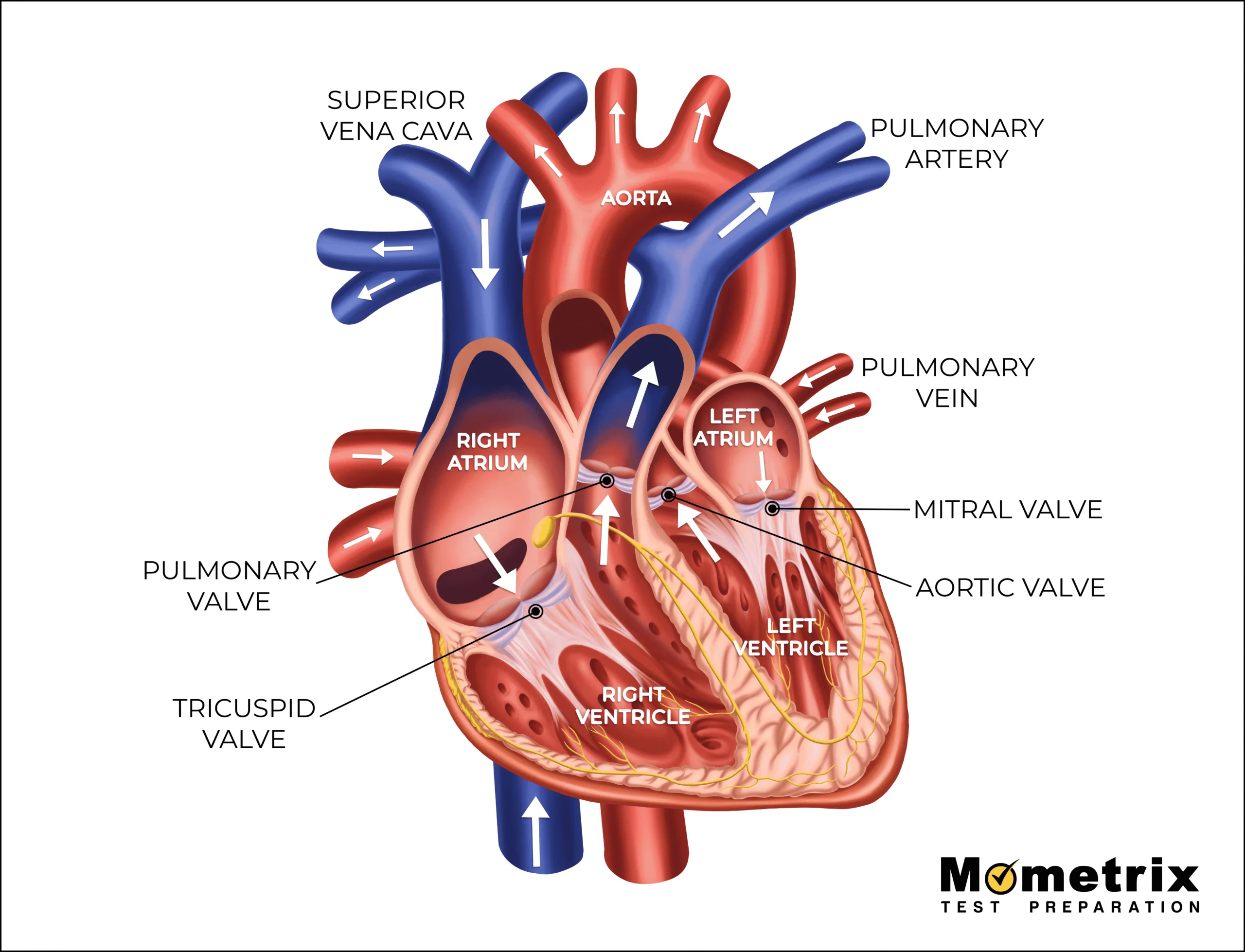
Hi and welcome to this video review of blood flow through the heart. Knowledge of blood flow through the heart is necessary in order to fully understand cardiovascular diseases and will play an important role in your nursing career.
Blood Flow Through the Heart
Deoxygenated blood flows into the heart through the superior vena cava (the SVC), inferior vena cava (the IVC) and the coronary sinus. The SVC and IVC bring blood back to the heart from the rest of the body and the coronary sinus returns blood that was used for coronary blood flow– that’s the blood that perfuses the heart muscle.
Deoxygenated blood fills the right atrium then the tricuspid valve opens, sending blood into the right ventricle. Once the right ventricle fills, the pulmonary valve opens and blood enters the pulmonary artery, traveling to the lungs where it is oxygenated.
The oxygenated blood then flows through the pulmonary vein into the left atrium. Once the left atrium fills, the mitral valve opens, sending blood into the left ventricle, which fills then sends oxygenated blood through the aortic valve into the aorta then on to the rest of the body. Oxygenated blood is sent to the tissues to distribute oxygen and returns in veins to the SVC and IVC to be reoxygenated.
Heart Diagram

As you can see, the heart and circulatory system is just a large, closed circuit pump. As nurses, we need to be able to understand the flow of the cardiovascular system and how a problem in one area of the heart will affect the patient and the rest of the system. Take a moment to think about all the different factors that can affect the heart’s pumping ability… valve stenosis, regurgitation, or prolapse, pulmonary hypertension, and heart failure to name a few.
Review
Now let’s test your knowledge with a couple practice questions.
1. You note a diagnosis of mitral valve regurgitation on your patient’s chart. You know the mitral valve lies between…
- The right atrium and right ventricle
- The left atrium and left ventricle
- The right atrium and the pulmonary artery
- The right atrium and left atrium
2. While reading a patient’s health history, you notice the patient has a diagnosis of right sided heart failure. You understand that right sided heart failure will cause blood to back up into the:
- Lungs
- Aorta
- Systemic circulation
Thanks for watching this video on blood flow through the heart. Please like and subscribe for more videos like this one.